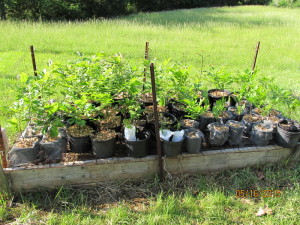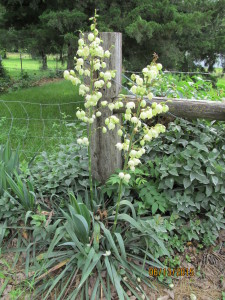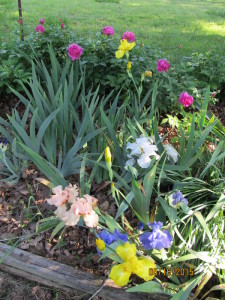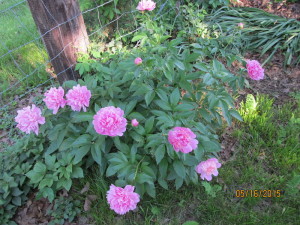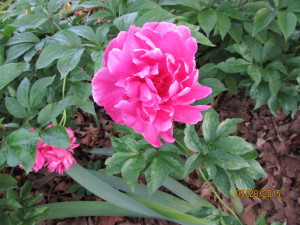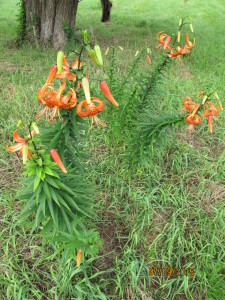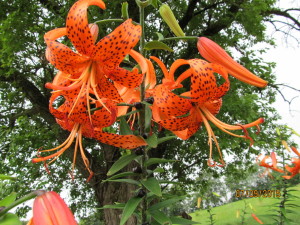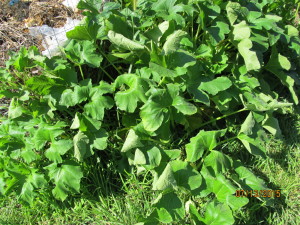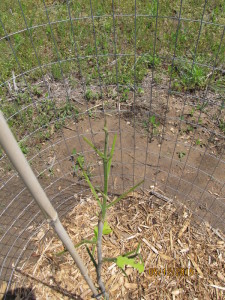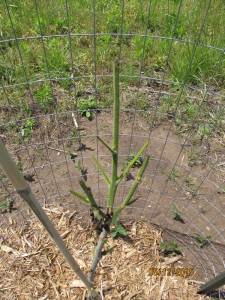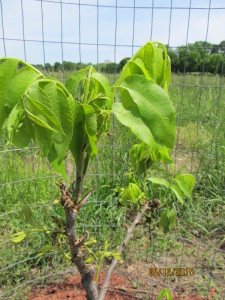After over-wintering the potted trees in the straw bale fort it is now time to move them to a raised stand where they will continue growing and their roots will be air pruned when they grow out the holes in the bottoms of the pots.
One goal starting trees in pots is to form a mass of roots inside the pots which will support growth after planting out into the field. A common technique is to use a process called “air pruning” to increase root mass inside the pot and also prevent root growth outside the pot. Although pecan and Chinese chestnut roots require some air in the soil to grow, when they try to grow out through the holes in the pot into pure air they are “air pruned” and cease to grow in that direction. If the pots had remained in the Winter fort where mulch was packed between the pots, the roots would have grown outside of the pots — through the holes in the pots into the surrounding mulch.
That will be accomplished by placing the pots on a raised platform about 15 inches above the ground as shown in the following picture. The bottom of the platform is made from cattle panel and supported about 15 inches above the ground. The ground underneath is covered in mulch to prevent weed growth.
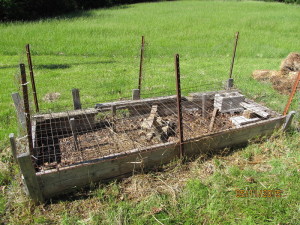
As observed in the next picture the potted trees fill in all the area of the raised platform.
